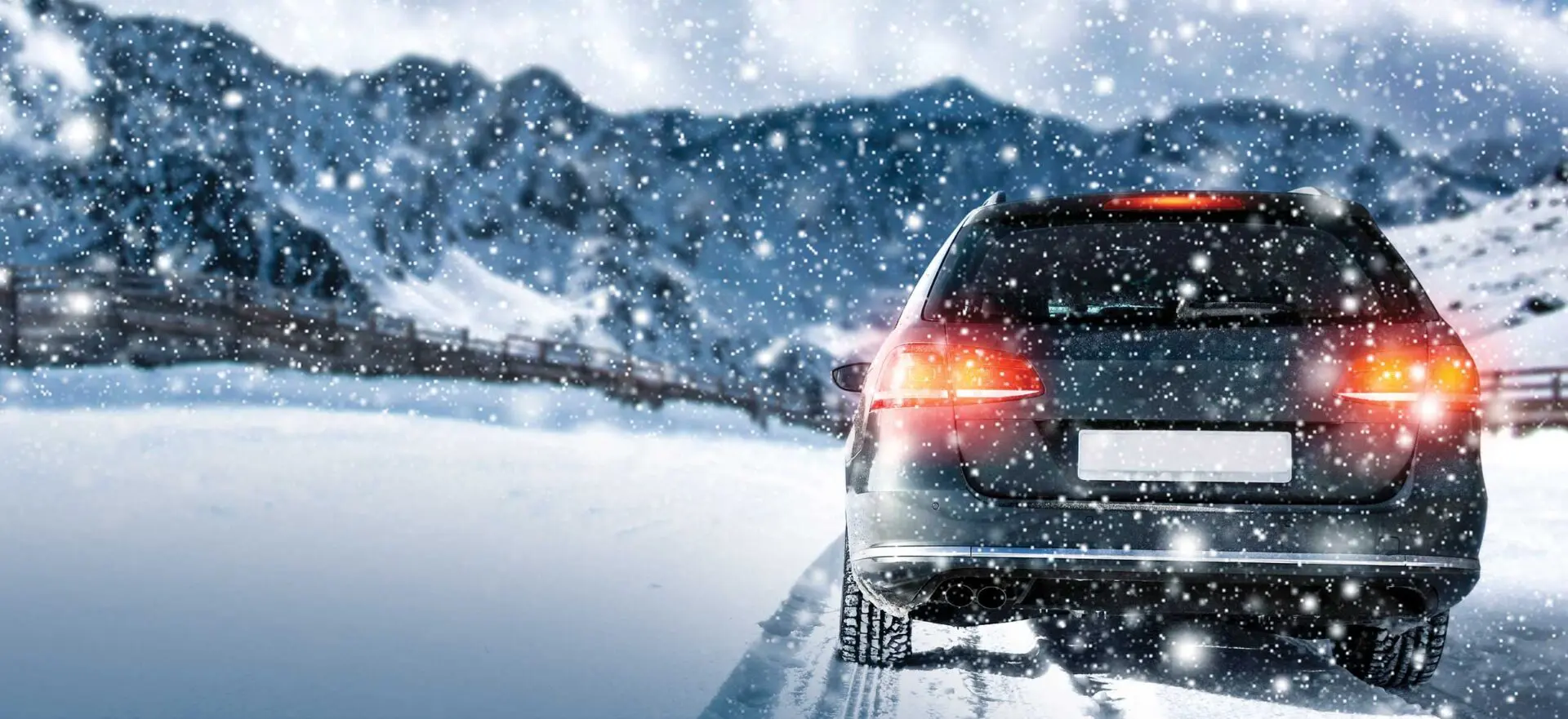Driving in a Winter Wonderland
By MS. CHRISTINE WALSH, STAFF WRITER
Winter is a beautiful time of year, and the cold weather is a favorite among many. However, the snow and ice bring an increased chance of a vehicle crash. According to the Federal Highway Administration, more than 116,800 people are injured on snowy or icy roads each year. Thankfully, by being mindful of the increased risks, you can prepare for safer journeys.
PREPARING YOUR VEHICLE
Regular tune-ups and maintenance are necessary throughout the year to check for leaks, worn belts and hoses, or other parts. National Safety Council (NSC) driver safety education and training expert Ryan Pietzsch offers the following tips:
- Test your battery; battery power drops as the temperature drops.
- Ensure the cooling system is in working order.
- Check wiper blades and replace if needed. Consider installing heavy-duty winter blades.
- Add wiper fluid rated for −30 degrees.
- Keep your gas tank at least one-half full to avoid gas line freeze. Or, if you drive an electric or hybrid vehicle, plug in vehicles at night to keep the battery temperature in its optimal range.
- Clean your vehicle’s external camera lenses and side-view mirrors to see your surroundings.
- Remove dirt, ice, and snow from sensors to allow the assistive-driving features such as automatic braking to work.
- Warm up the vehicle before driving in frigid weather.
- Have winter tires with deeper, more flexible tread.
- Check your tire pressure as it may drop when the temperature drops.
- Prevent carbon monoxide poisoning; never leave a vehicle running in your garage—even with the garage door open.
- Wait out the storm if possible; if you must travel, share your plans and route with someone before you leave.
PROTECTING YOURSELF
“The most common action that causes winter driving incidents…is inappropriate relative speed,†Pietzsch said. “Relative speed can be defined as the appropriate speed necessary to allow the driver to recognize a hazard, understand the appropriate response, and act in time to avoid the hazard and maintain control of the vehicle.†The NSC recommends a 3-second following distance under normal, clear, dry conditions, and 1 second for every additional hazard. If you are driving (1) at night, (2) while it is snowing, and (3) the roads are already slick, the recommended following distance between you and the vehicle in front of you is a minimum of 6 seconds.
According to the Michigan Department of Transportation, stopping your vehicle on snow or ice can take 10 times longer. Even four-wheel-drive vehicles may not be able to brake or turn well after losing traction. “Neither electronic nor manual four-wheel-drive systems will help you stop,†Pietzsch said. “Both systems provide traction for propulsion, and drivers must always be aware of the conditions and their need and ability to stop in time.â€
If you do skid, steer into it. Press down firmly and hold antilock brakes or gently pump standard (non-antilock) brakes.
“Electronic Stability Control [ESC] helps drivers maintain control of their vehicle by keeping the vehicle headed in the driver’s intended direction,†Pietzsch said. “ESC does not increase the available traction but maximizes the possibility of keeping the vehicle under control and on the road during the driver’s natural reaction of steering in the intended direction in a skid or slide.†Drivers must not become reliant on these systems or be overconfident in their abilities. “Winter driving still requires the driver to select an appropriate speed for the conditions and must be able to stop in time to avoid a collision or getting stuck in the snow,†Pietzsch added.
If you do skid, steer into it. Press down firmly and hold antilock brakes or gently pump standard (non-antilock) brakes. Skidding is a reason not to use cruise control when snow or ice is on the road. If your vehicle skids, the cruise control will accelerate to maintain a constant speed and increase your chance of losing control.
What causes these slippery roads is referred to as “black ice—or ice patches that may not be visible. Therefore, it is important to be cautious at intersections, off-ramps, bridges, and shady areas that tend to ice over before the roads become slick.
PREPARING FOR AN EMERGENCY
If a crash does occur, your vehicle should contain jumper cables, road flares or reflectors, “winter†windshield washer fluid with deicer, and an ice scraper or snow brush. You will also need traction material such as sand or cat litter, blankets, a flashlight with extra batteries, a snow shovel, broom, gloves, hat, boots, tire chains, a first-aid kit, and a cell phone with a car charger. For longer trips, add nonperishable food and water, hand warmers, and any necessary medication.
If you are stopped or stalled, stay with your car. Put bright markers on the antenna or windows and keep the interior dome light on to increase your vehicle’s visibility. Run your vehicle only long enough to stay warm and ensure that your exhaust pipe is free of any snow, ice, or dirt to avoid carbon monoxide poisoning. If you are stuck in the snow, try moving the vehicle using second gear/D2 (manual/ automatic transmission) and press the accelerator gently; try rocking the vehicle back and forth by using the drive and reverse gears until the car rolls out.
SAFE DRIVING: WINTERTIME OR ANY TIME
“Regardless of the weather, drivers should drive distraction-free, designate a sober driver or arrange an alternative mode of transportation, and buckle up,†Pietzsch said. Avoid fatigue by getting plenty of rest before driving, stopping at least every 3 hours, and rotating drivers if possible.
If you plan on traveling this winter, you can keep you and your passengers safe with these tips in mind. Enjoy the winter wonderland safely!

